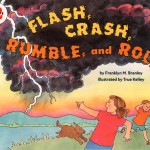
Readers & Thinkers: The 2012 Nobel Prize in Economics. When Prices are Hidden
Posted by ludw1086 on Oct 15, 2012 in Readers & Thinkers | Comments Off on Readers & Thinkers: The 2012 Nobel Prize in Economics. When Prices are HiddenDear All:
Well, who won?
The Nobel prize for economic sciences for 2012 was announced today, October 15, 2012. It went to two people Alvin Roth and Lloyd Shapley.
Shapley is 90 years old, born in Cambridge, Massachusetts and a Professor at UCLA. Most of his important work was done at the Rand Corporation. He obtained his BA from Harvard and his Ph.D. in mathematics from Princeton University.
Roth is 60 years old, and is currently a Professor at Stanford University. Most of his important work was done at Pittsburgh University and Harvard. He obtained his BA in Operations Research from Columbia and his Ph.D. in Operations Research from Stanford University.
The prize was awarded for market design, which is really a branch of game theory. It is becoming clear that the game theory economists have a strong lobbying group at the Nobel Committee. Nevertheless, the research and ideas of these laureates is very interesting and relevant to the real world.
- So what did these guys do that makes them so Noble?
The Nobel committee wrote that the pair received the prize “for the theory of stable allocations and the practice of market design”.
One of the hard things to figure out for economists, is how to allocate resources when prices aren’t to be used. When you wish to go to college, typically you don’t just pay for it or when you wish to get a new job, the firm doesn’t always obtain the best candidates by paying the highest salary. Yet, we all hope for an efficient outcome. Some people call these outcomes optimal stable outcomes. The outcome is stable in the sense that no two agents would prefer to have been matched with each other rather than with whom they are matched and optimal if every applicant is as happy under the current outcome as they would be in any other outcome.
For example, when people apply to colleges, how can we insure that the schools get their preferred candidates, and that conditional on qualifications students get their preferred schools? When people apply for jobs right out of school, how can we be sure that firms get their preferred candidate and that graduates get their preferred company? When boys seek girls, how can we be sure that boys get the girls they prefer and that girls get the boys they prefer? When kidneys are needed by some people and donors are available, how can we insure that they are matched up correctly? In many of these markets, price is either prohibited by law or not traditionally accepted and so cannot be the allocation mechanism.
Both Shapley and Roth helped design solutions to these problems.
Shapley and Gale proposed introduced the idea of mechanisms that might lead to stable outcomes in a paper which talked about the marriage market. They imagined a situation with 3 men and 3 women. Each man has a preference ordering of the women. For example, Man A might like Woman 1 best, and then 2 and then 3. Each woman also has a preference ordering for the men. There are a total of 6 possible marriages. Some of them will be optimal and some won’t be. They then asked if there was a system that would ensure a stable outcome – that is, that no two pairs wanted to switch at the end. They found a system that did. In round 1, every man proposed to his favorite woman. The women keep their best offer (meaning highest person on their list) and reject all others. Each woman doesn’t accept her best offer just yet, she keeps him on a string. In round 2, all those men that were rejected propose to their second choices. And this pattern continues until everyone has a mate. The final outcomes are all stable.
Of course, in the real world of finding a mate, the real issue is lack of information and not matching. That is, people don’t pick mates in a room with full information, they often have limited people to choose from, limited information on those people, and in part this explains much of the poor matching and high divorce rates (over 50% in the US). In the real world of finding a mate, there are also substantial time lags and it would not be really feasible to keep the mates “on the string”. However, what might be interesting is for online dating sites to consider using such a system…maybe some stable pairings might result.
Shapley and Gale also discuss deferred acceptance procedures of universities and find that they are stable and optimal systems to match students and universities.
Roth focused on the application of the basic theory to real-world problems, including doing experimental laboratory testing of the ideas. Roth and his colleagues found that the matching of medical students to residency programs, that was established by the NRMP(National Resident Matching Program) in 1951, produced stable matchings. He did, however, notice that as more and more couples searched residency together, the algorithm was less favorable to these married couples. In 1997, the NRMP changed their system to the new algorithm known as the Roth-Peranson algorithm
Roth and his colleagues also helped redesign the high-school admissions procedure in New York City which was put into effect in 2003. A similar thing was done for the Boston Public School system in 2005.
One of the most interesting applications has to do with the market for kidney transplants. The ideas were based upon a paper by Shapley and Scarf. It turns out that setting up an exchange for kidney transplants and having at least 3-way exchanges (6 operations simultaneously) leads to much better matches than just bilateral kidney exchanges. If you want to hear a cool description of this market, go to http://www.youtube.com/watch?v=4tdOY-HHC7s.
- So what about the Nobel choice?
The Nobel committee has been getting really jolly about game theorists lately. This combined with Shapley’s age may have been the reason for the timing of this Nobel.
The winners have degrees in mathematics, but that isn’t so surprising. In fact, being an applied mathematician increases your odds of winning the Nobel prize in economics (http://mpra.ub.uni-muenchen.de/41363/). Ironically enough, in that 1962 paper, Gale and Shapley ended the paper with the following statements:
The argument is carried out not in mathematical symbols but in ordinary English; there are not obscure or technical terms. Knowledge of calculus is not presupposed. In fact, one hardly needs to know how to count. Yet any mathematician will immediately recognize the argument as mathematical, while people without mathematical training will probably find difficulty in following the argument, though not because of unfamiliarity with the subject matter.
I was interviewed by the French Slate about the Nobel Prize and they asked me who I thought should win it (http://www.slate.fr/story/62919/nobel-economie-pronostics). I told them that “Ideally, I would want the Nobel prize to be given to an economist whose work has dramatically affected our everyday lives.” This isn’t always easy in economics. To a certain extent, this award does that and this is a good thing.
We also have reason to be proud of free markets. When Roth studied the NRMP system, which was established in 1951, long before these ideas emerged, he found that the system was stable at matching students to hospitals. As more and more couples emerged on the job market, he helped modify the system in 1997 to account for this, which improved it. I spoke to several well-known doctors this morning that said of the new system “It wasn’t a big deal. It wasn’t even news in the field of medicine.” When Shapley and Gale studied school deferred admissions systems, they also found that they were stable and optimal. So it’s good to analyze these things, but it’s also good to know that the market can get it right.
- So is that it?
I didn’t expect this Nobel to be given, but Shapley and Roth are known. Shapley wrote some classical game theory pieces long ago. A well-known game theorist at MIT said to me this morning “I definitely think it’s a good prize.”
The field of market design is expanding. There is now a market design group at the NBER (National Bureau of Economic Research). Harvard, MIT, and Stanford are all teaching undergraduate market design classes. There are some markets where the lack of liquidity and prices leads to complicated situations. Maybe even in financial markets, which almost always have a price, market design research might help…like what to do after a Flash Crash or how to allocate securities during a complete absence of market makers.
On the other hand, many markets without easily verifiable prices might have hidden prices. Even the marriage market oftentimes has dollars behind it. College admissions sometimes has dollars behind it. And the black market for Kidneys has dollars behind it.
For more information on the winners:
http://www.nobelprize.org/nobel_prizes/economics/laureates/2012/
Finally, congratulations to these winners, their pursuit of knowledge, and the armies of other researchers who walked with them.
Enjoy!
Ludwig
October 15, 2012






